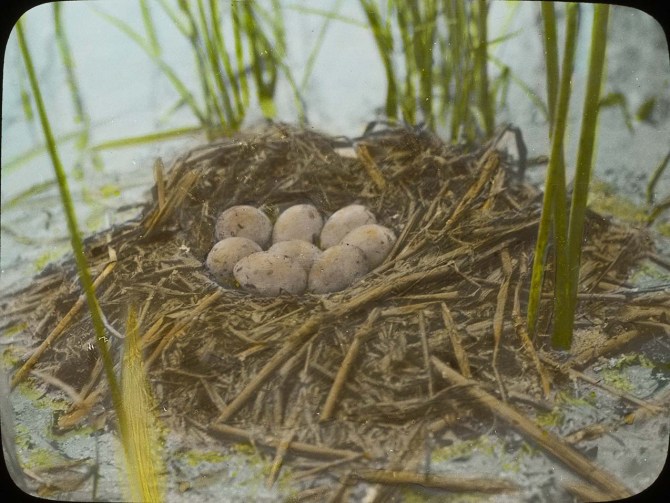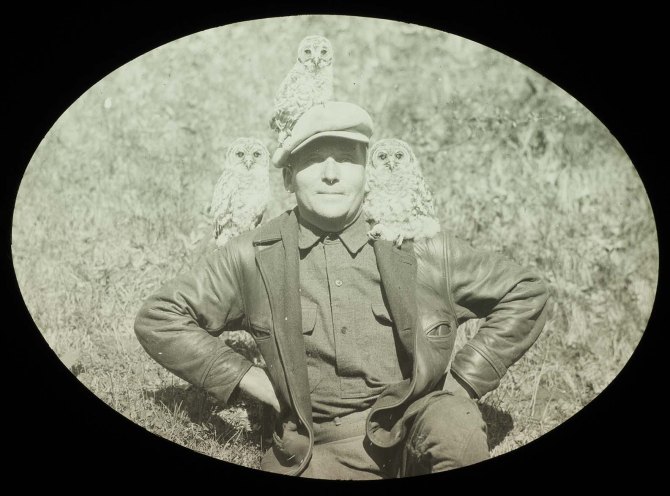A Glimpse of the Past Through the Eyes of Ornithology.
The history of photography can be traced back much farther than one might imagine. During the 17th century, “magic lanterns” were a frequent pastime for many members of society. Hand painted images on glass plates could be held in front of a candle or other light source, and would result in the image being projected onto the wall. After the invention of photography in 1800’s, these glass lantern slides were repurposed for the sake of photography.

Walter Bennett (left) and Walter Rosene
setting up camp during their travels.
The glass slides had a positive print of an image printed onto the back panel of one piece of glass. A second piece of glass was then laid across the image, creating a protective seal. These images were printed in black and white and then could be hand painted to add color. When the slide was finished, the glass image was inserted in a lantern slide projector, which illuminated and then projected the image for the viewer. Lantern slides could then be used by people of all backgrounds for both educational and recreational purposes.
Fast forward to 1924 in northern Iowa where two ornithologists were using lantern slides to document their bird sightings on both local and national scales. Walter Bennett and Walter Rosene, both active ornithologists and close friends, were using photography to document the birds that they encountered during their travels. Walter Rosene, a banker from Ogden, Iowa planned a trip to Stump Lake and Devil’s Lake in North Dakota in June of 1924 with Walter Bennett, who was working as an insurance agent and a realtor in Sioux City, Iowa. Rosene was looking for a better method of photography for the trip, and Bennett suggested a portrait lens.

Eared Grebe nest at Stump Lake, North Dakota,
hand colored by Walter Bennett.
The lens was purchased, and throughout the trip the pair took a large number of negatives, which Bennett took with him when they arrived home. From there, Bennett printed the negatives on glass lantern slides and then hand colored them himself for Rosene. Walter Bennett would go on to photograph hundreds of birds and even make short films of birds all across the country. Bennett had a collection of photography equipment that in all totaled about $5,000 in 1934, which would be a whopping $45,822.30 in 2018.
Walter Rosene was also known for his skills at photographing birds. As teacher at the McGregor Wildlife School, Rosene used his photographs as an important tool. Many of his photographs ended up in his scrapbooks with stories detailing the background of each image. These photographs and more are now housed here in the Iowa State University Library Special Collections and University Archives.

Walter Rosene with three Barred Owlets
near Paton, Iowa, 1928.
Both Walter Rosene and Walter Bennett served as presidents of the Iowa Ornithologists’ Union. Walter Rosene was the first president, serving from 1923-1926, and Walter Bennett served as the organization’s third president, from 1929-1932.
The daily events captured by these two men have become treasured mementos, continuing their original purpose, to educate and inspire, nearly 94 years past their original dates. Now that they have been preserved and digitized, they can continue to do just that, inspiring an entirely new generation of bird watchers. With these images and the stories that come with them, we can learn from the past and those who came before us, to build a better future for all creatures, both big and small.